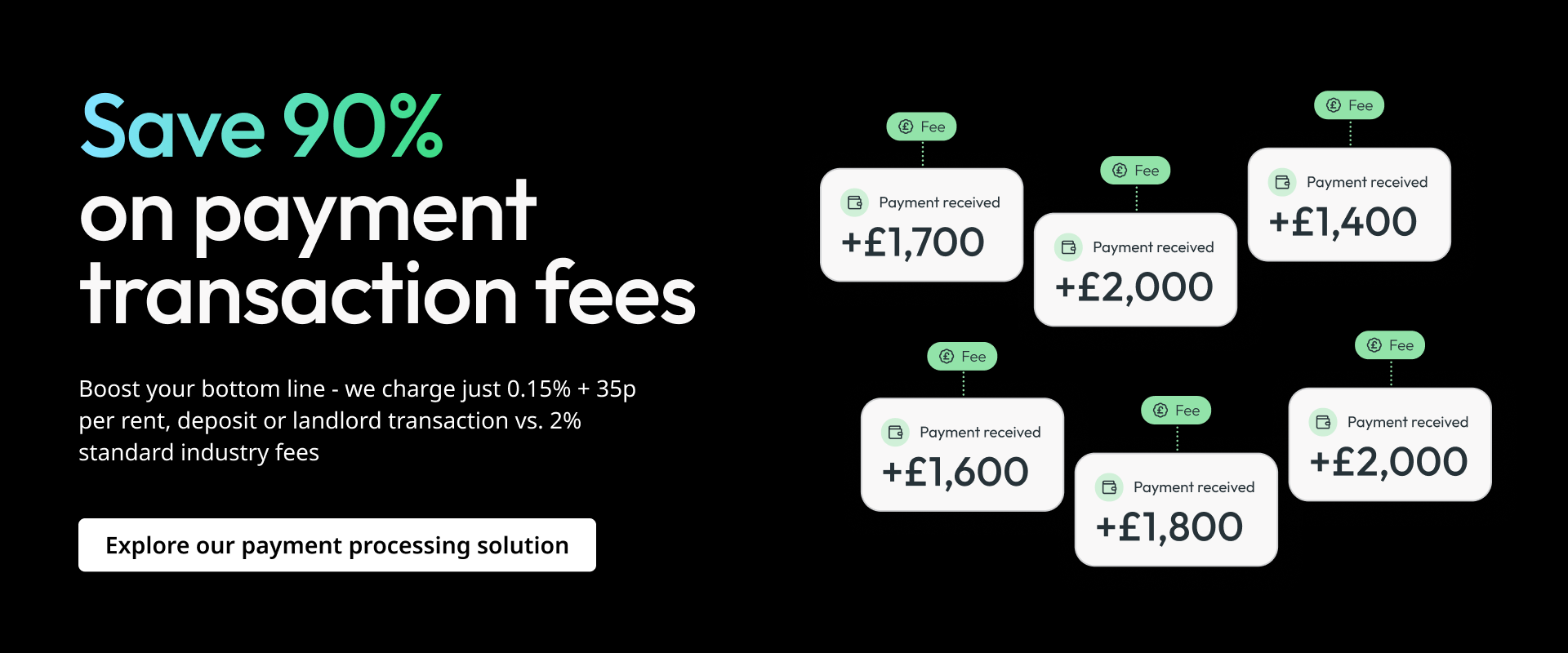
Property Managers’ Guide to Deposit Return

Image courtesy of Adobe
When tenants move out at the end of a tenancy, property managers need to begin the process of returning deposits. This will require you to assess the condition of the property, consider any potential deductions and agree them with your tenants.
We’re offering a clear breakdown of the steps you need to take to make deposit return as smooth as possible and handle any potential deposit disputes.
What is a deposit?
A deposit is a sum of money paid by tenants to offer property managers or owners financial security in case their property is damaged, not left in a habitable state, or the tenancy goes into rent arrears. Legally, it cannot be more than five weeks’ rent for tenancies of less than £50,000 per year or more than six weeks’ rent for tenancies over £50,000 a year.
What are deposit protection schemes?
The Housing Act 2004 requires property managers to protect their tenants’ deposits in a government-authorised Tenancy Deposit Protection scheme. These third-party schemes will hold and protect the deposit for the duration of the tenancy and can provide independent services to help resolve potential disputes at the end of the tenancy, if needed. You must tell your tenants which scheme you have used within 30 days of receiving their deposit.
How long do you have to return a deposit?
Deposits should be returned to tenants within ten days of the tenancy ending, or both parties agreeing on the sum that will be returned after potential deductions. If there is a dispute, the deposit will remain in the deposit protection scheme until the issue has been resolved.
Why do property managers make deposit deductions?
Tenants have a duty of care to return the property they have rented in the same condition as they found it at the start of the tenancy, allowing for reasonable wear and tear. Examples of reasonable wear and tear should include small scuffs or marks, worn flooring, or faded upholstery.
You should use the inventory included in your check-in report to compare the state of the property at the end of the tenancy to the beginning and establish any necessary, reasonable deductions.
Common examples of deposit deductions
You can make deposit deductions for things like unpaid rent remaining at the end of the tenancy, missing items, gardening fees, cleaning required to return the property to its original condition, unapproved redecoration by tenants, or damages to property, appliances, or furnishings.
According to figures from the Deposit Protection Service, the most common reasons for claiming against tenants’ deposits are:
- Cleaning - 63%
- Damage to property and contents - 53%
- Redecoration - 37%
- Rent arrears - 23%
How to handle tenancy disputes
If you make deductions from your tenants’ deposit you must provide a written explanation of why you are doing so. The burden of proof lies with the property manager, not the tenant, particularly if the tenant takes the dispute further and intervention from a third party is required. This means you will need to supply evidence for your suggested deductions. This could include pictures of the damage, receipts for repairs, maintenance or gardening work involved, and proof that all claimed costs are reasonable.
Here are some tips on how to best handle a tenancy dispute, if one should arise.
Conduct a thorough property inspection
As soon as your tenants have moved out, you need to carry out a property inspection and create a comprehensive checkout report. This report should include an updated inventory with date-stamped photos. You can submit your checkout report as evidence in a dispute. It is also best practice to conduct a check-in report and create an inventory then, so you can compare the two.
Keep written records of all communications
As a property manager, it is a good idea to retain written records of all your communications with tenants throughout the tenancy. You could potentially submit this as a record of property damage that occurred during the tenancy.
You should also keep copies of any direct communications you have with tenants during the dispute.
Use your Tenancy Deposit Protection scheme
Tenancy Deposit Protection schemes offer independent, unbiased deposit dispute resolution services to help property managers and tenants come to an agreement. They will review evidence from both parties and come to a decision about how much of the deposit should be returned to the tenants. This helps keep things fair and avoids unnecessary escalation.
Our property management software, Concurrent, integrates with mydeposits which offers free access to their award-winning adjudication service.
Deposit return made simple
By following these simple steps, you can make deposit return as stress and hassle-free as possible for all parties involved.
To find out more about deposits, check out our blogs on the pros and cons of charging tenancy deposits and our guide to holding deposits.
Share


